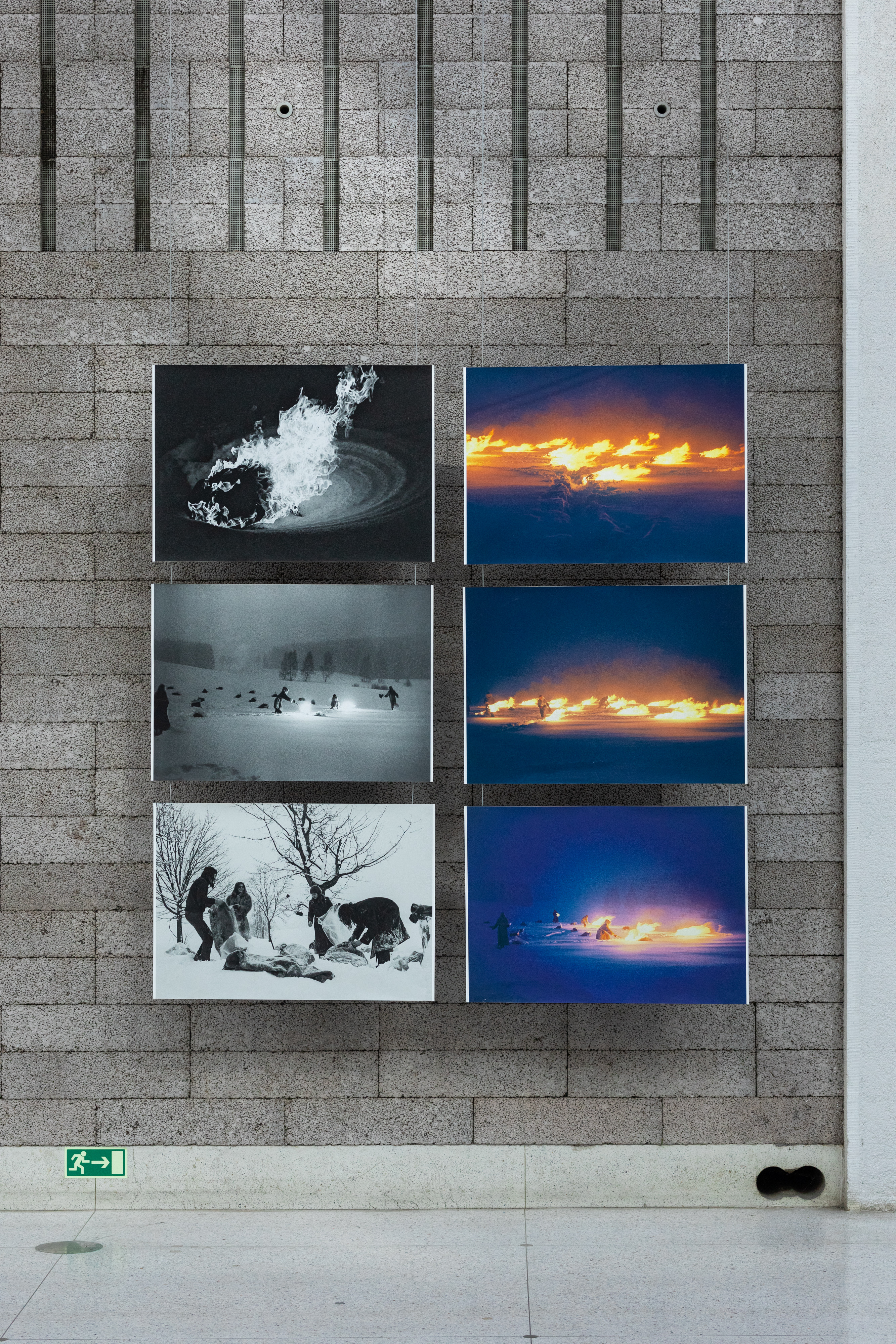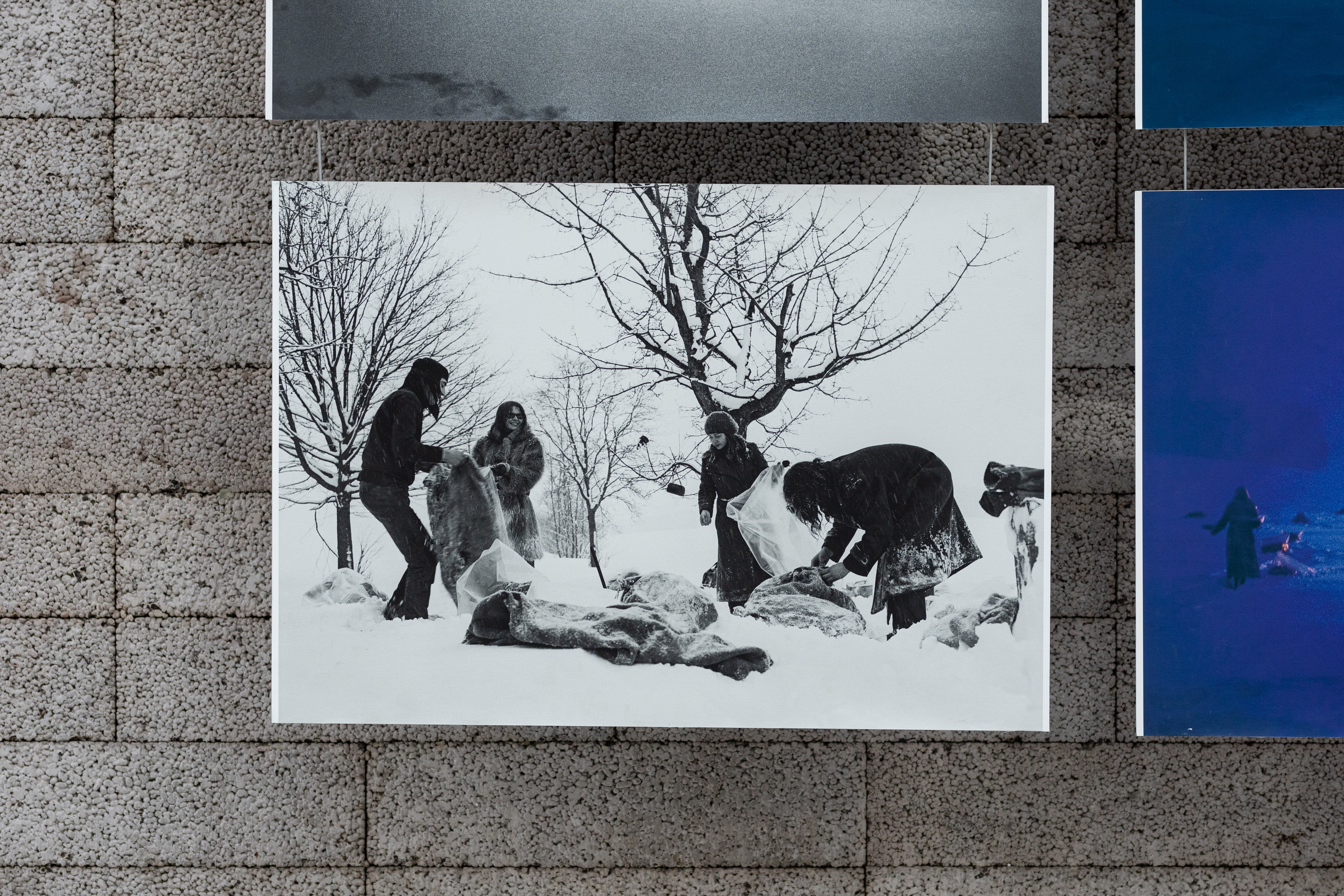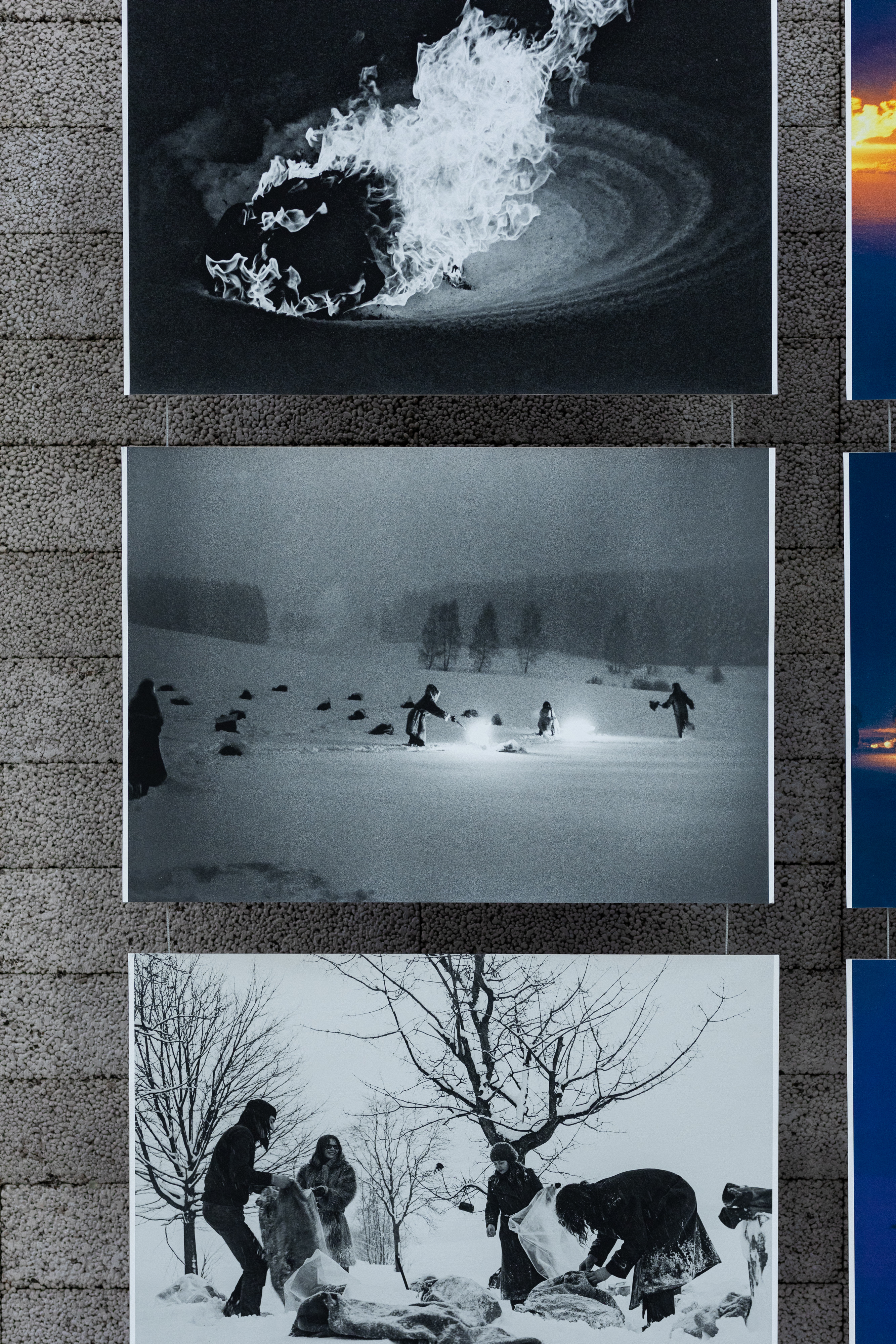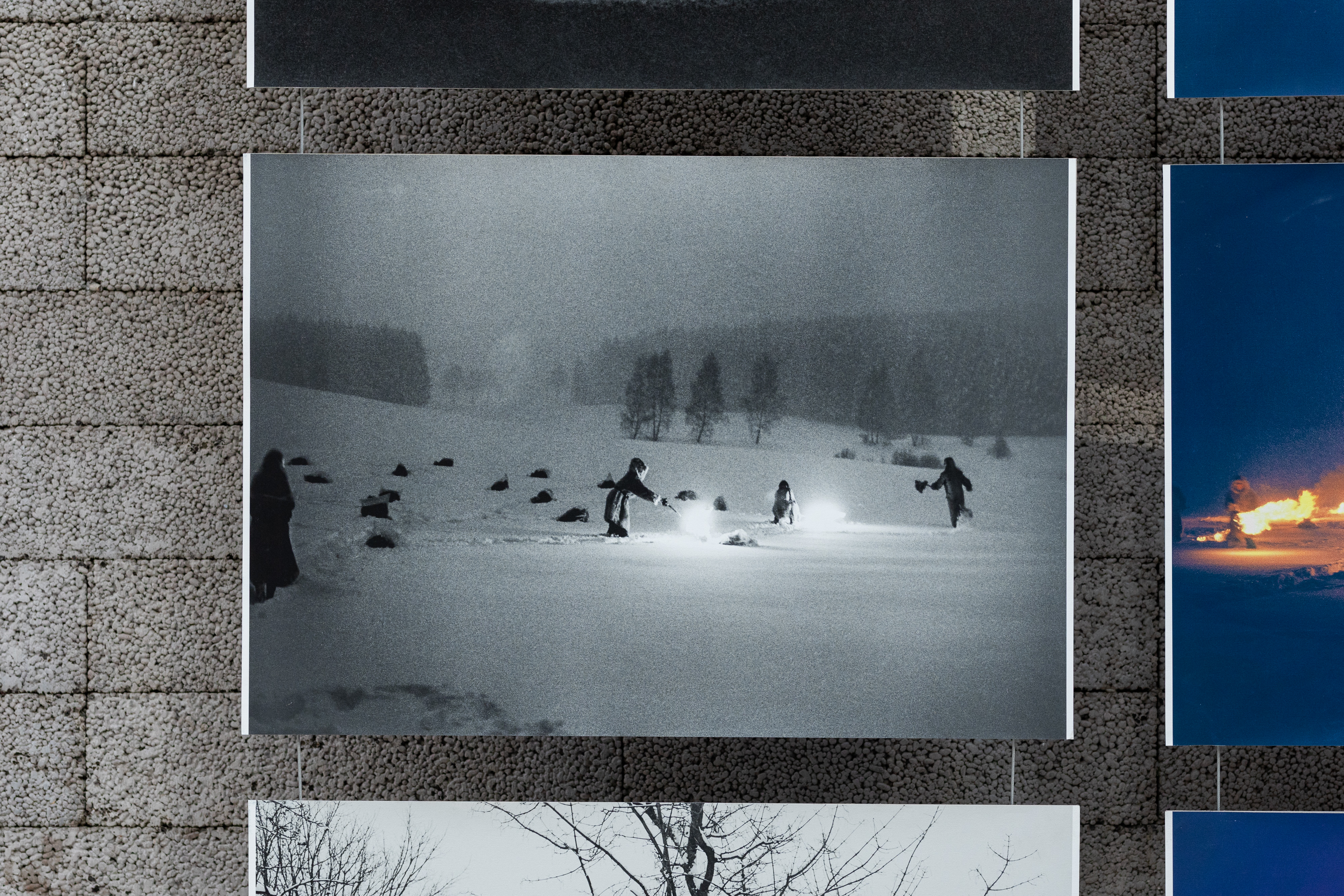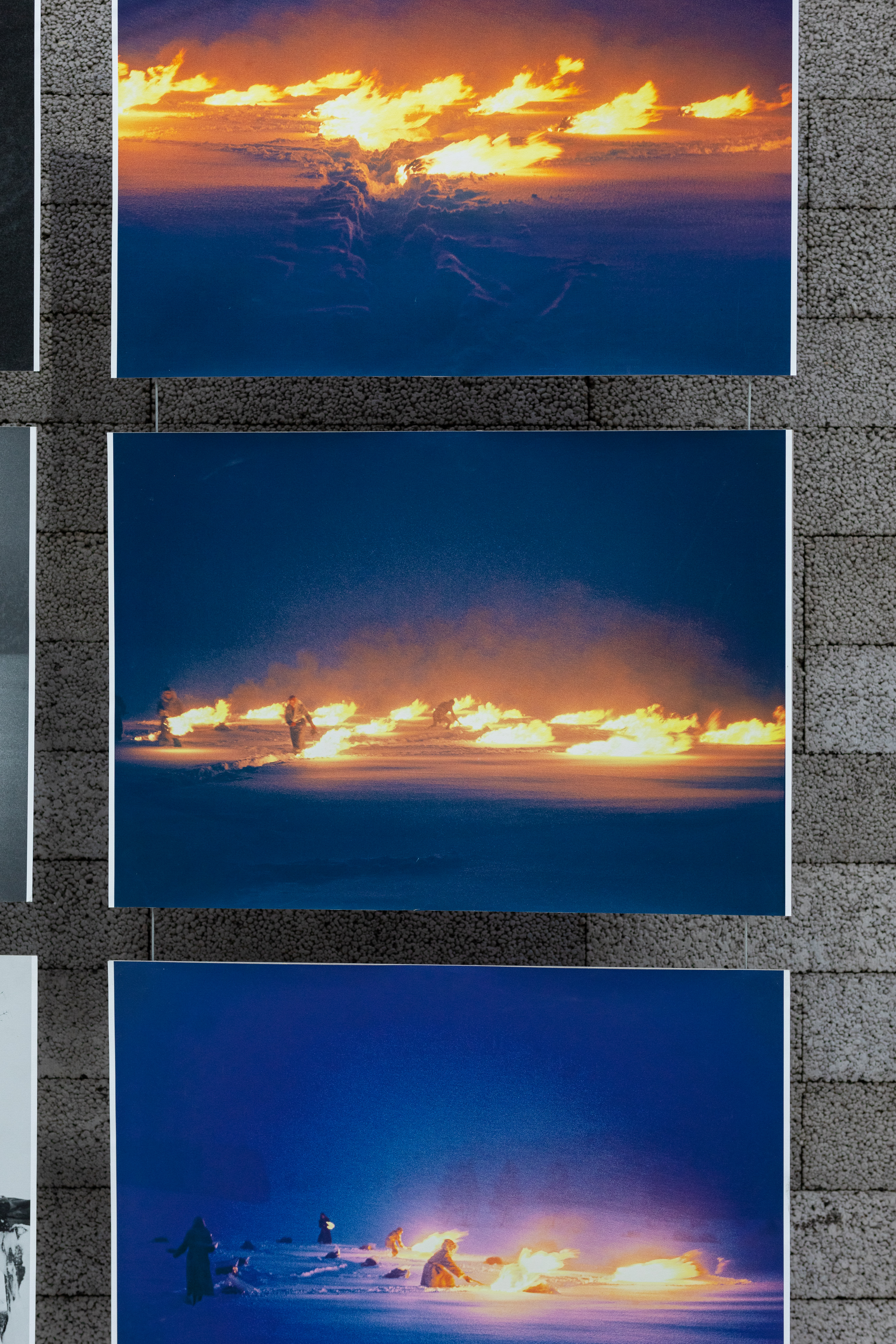Zorka Ságlová
Work exhibited in the Trade Fair Palace:
Tribute to Gustav Oberman / 1970 / 6 photographs (each 67 × 100 cm) / courtesy of hunt kastner
Tribute to Gustav Oberman, 1970, Biennale Matter of Art 2024, National Gallery Prague – Trade Fair Palace (c) Jonáš Verešpej
Zorka Ságlová (b. Humpolec (Czech republic), 1942, d. Prague, 2003) was a Czech artist, known for her actions in public space during the 1960s and 70s. After the Prague Spring in 1968, she couldn’t show her art in public, so she started doing performances outdoors instead. These actions were both poetic and political. They usually involved a group of people doing something together. Some of them, like throwing balls into a pond, may have seemed pointless at first. However, they actually represented the freedom to act together, which is exactly what the authorities were trying to stop. Zorka Ságlová often did these activities in the countryside close to her hometown, Humpolec. Tribute to Gustav Oberman, her work shown at Matter of Art, is dedicated to the memory of the shoemaker Oberman, who stood up against the German Occupation in World War II. He used to walk about the hills surrounding Humpolec and spit fire. In the fields of Bransudov, Zorka Ságlová and her friends lit up 20 piles of gasoline-soaked rags in the snowy landscape. This quiet land art action took place at night. The fire burned brightly in the dark sky, showing the power of protests against oppression, even if they are subtle. Lighting a fire can also be connected to ancient local stories from the 13th century that talk about fires being lit in the hills nearby. Ságlová’s work connects to other works in the biennale that deal with rural landscapes and acts of standing up against power.
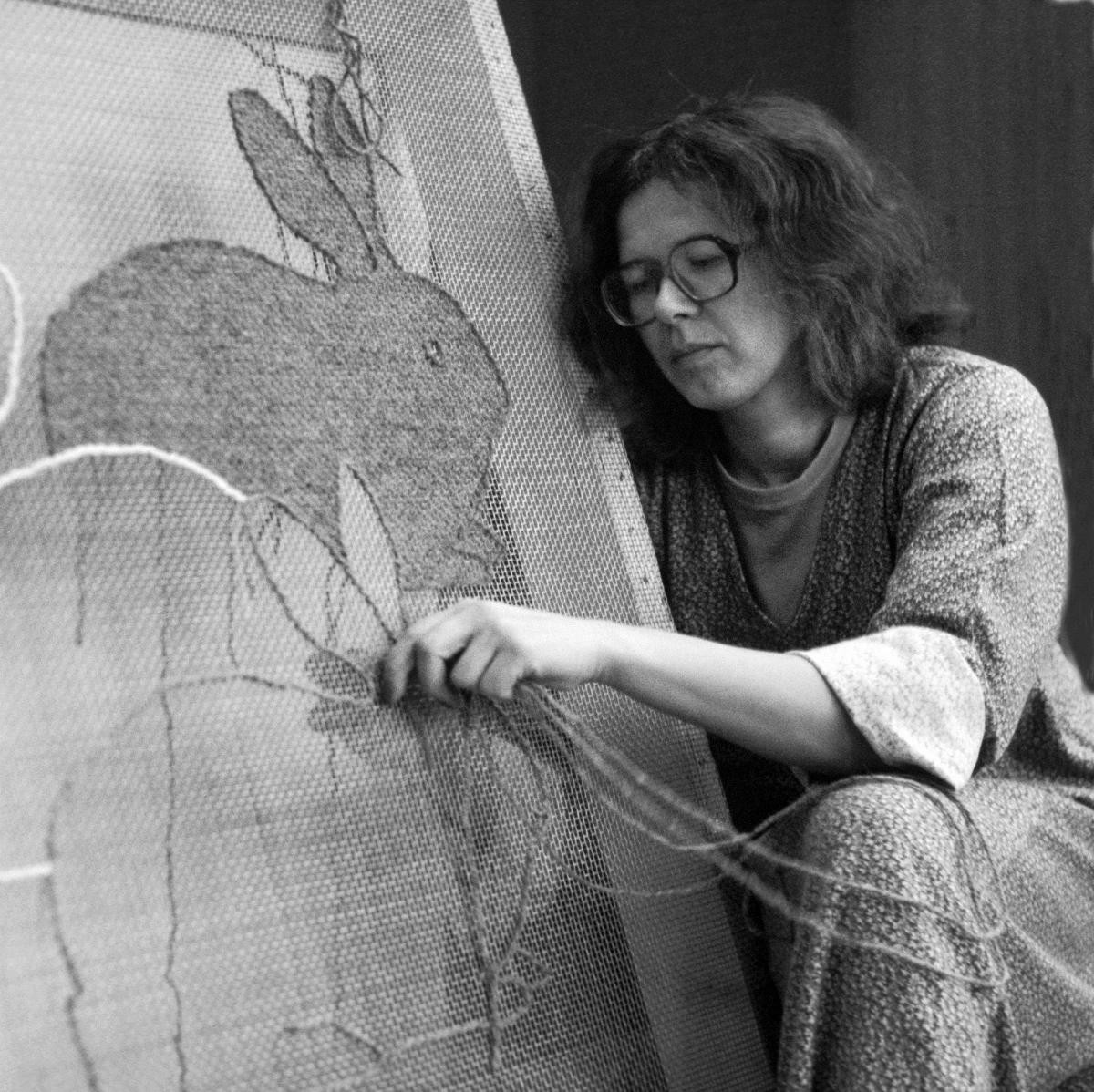
(c) Jan Ságl, source: Secondary Archives
Zorka Ságlová was born in 1942 in Humpolec. Between 1961 and 1966 she studied at the Academy of Arts, Architecture and Design in Prague in a textile studio, which at that time was led by Antonín Kybal. While still studying in 1964, she married photographer Jan Ságl and four years later their daughter Alena was born. In the future, the couple were an important support both on a personal level and on an intellectual and professional level.
From several informal works that were created right after her arrival in Prague, Ságlová quickly moved to regular structures formed by basic geometric elements. These were created as a result of a combination of two rasters of the technical registration of the textile satin weave used in the production of damask fabrics and their mutual overlapping. She then exhibited these works at the now legendary exhibitions Constructive Tendencies in 1966 and New Sensitivity two years later, in which she participated as one of the youngest exhibitors. The two spatial objects also exhibited within the framework of \ New Sensitivity marked an important turning point in the author's artistic thinking, when they brought into her work the idea of the viewer as an active participant in the creation of a work of art. A natural elaboration of this idea was the realization of four events in the wild, of which the first Throwing balls into the Bořín pond in Průhonice took place in 1969 and the last Tribute to Fafejt in 1972. In addition, in 1969 she also realized the Hay-straw event Václav Špála in Prague, for which she was strongly criticized by both the press at the time and the majority of the professional public, and which was one of the immediate causes of her artistic isolation in the 1970s and 1980s, during which she could not exhibit for almost twenty years.
During this time, Ságlová devoted herself to an extremely lengthy work on several large tapestries, during which she discovered for herself her emblematic motif of a rabbit. Since then, she has systematically collected information about the meanings of the rabbit character in different cultures and its various depictions. She returned to painting in 1984 when she updated her 1960s-based structures with a satin weave using the often thousand-fold multiplied rabbit figure, which she replaced with the original geometric elements. Later, instead of hand-painted figures, she also used stamps with a rabbit motif and began working on action drawings with live rabbits.
In the 1990s, in addition to painting, she also devoted herself to assemblages and photographs. Her work, based on visual citations of found depictions, dates back to 1991, in which she often used documentation of the changes in the rabbit hero over the years and other evidence of human cultural development, as well as fragments of everyday life. For some of these works, she used various types of damask fabric instead of ordinary painting canvas, and thus returned to the starting point of her artwork with an arch.
